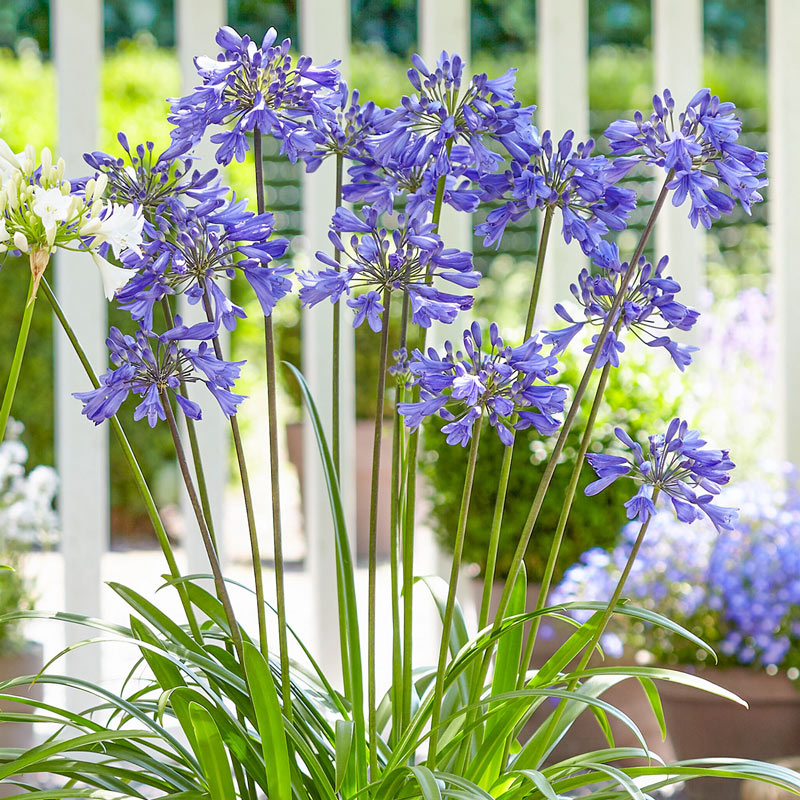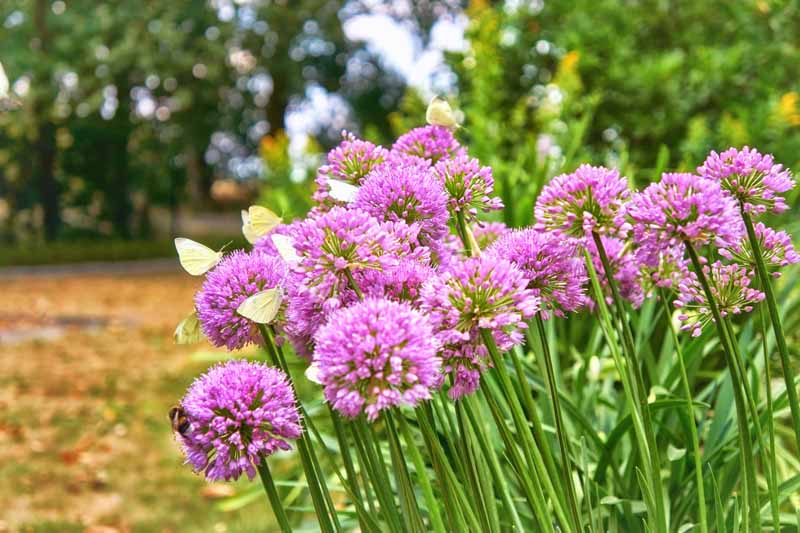Exactly how to Plant and Maintain Agapanthus in Your Garden
Exactly how to Plant and Maintain Agapanthus in Your Garden
Blog Article
Releasing the Secret to Effective Agapanthus Farming: Advice for a Flourishing Yard
In the world of horticulture, cultivating agapanthus successfully calls for a calculated strategy that incorporates different facets of plant treatment. By comprehending the nuances of agapanthus farming, one can produce an atmosphere where these plants flourish and bloom perfectly.
Planting Agapanthus: Finest Practices
When planting Agapanthus, proper dirt preparation is important for ensuring effective growth and growth of these attractive blossoms. Agapanthus, frequently referred to as Lily of the Nile or African lily, grows in well-draining soil with a slightly acidic to neutral pH degree - Agapanthus. Before growing, it is essential to modify heavy clay dirts with raw material such as garden compost or peat moss to enhance water drainage and offer essential nutrients for the plants
To plant Agapanthus, select a place that obtains full sunshine to partial shade, as this will promote healthy and balanced growth and bountiful flowering. Dig a hole two times the size of the plant's root sphere and position the Agapanthus at the same depth it was previously expanding. Gently backfill the hole with dirt, pushing down strongly to get rid of any air pockets around the roots.
Water the freshly grown Agapanthus extensively and continue to keep the dirt equally moist, specifically throughout the plant's energetic growing season. Agapanthus. Using a well balanced plant food once a month can even more sustain the plant's development and flowering. By adhering to these best methods for planting Agapanthus, you can develop a stunning screen of these captivating flowers in your yard
Perfect Dirt Issues for Agapanthus
For optimal growth and flowering success of Agapanthus plants, making sure the dirt problems are ideal is vital. Agapanthus grows in well-draining dirt with a somewhat acidic to neutral pH degree ranging from 6.0 to 7.0. This sort of dirt permits ample water drain, protecting against waterlogging which can lead to root rot. To improve dirt water drainage, take into consideration including natural issue such as garden compost or peat moss when preparing the growing website. Furthermore, Agapanthus chooses soil that is rich in nutrients, so incorporating a balanced fertilizer throughout the expanding period can advertise healthy growth and lively flowers.

Watering and Feeding Tips
To guarantee healthy growth and vibrant blossoms, correct watering and feeding methods are important for effective Agapanthus growing. Agapanthus plants benefit from regular watering, specifically throughout the expanding period.
When it pertains to feeding Agapanthus, a well balanced fertilizer with equal parts nitrogen, phosphorus, and potassium can be used in the springtime to promote healthy development and flowering. Slow-release fertilizers are ideal for offering nutrients slowly over an extensive duration. Avoid over-fertilizing, as this can lead to too much foliage like this growth at the expenditure of flowers.
Additionally, incorporating natural matter like garden compost right into the soil can enhance nutrient levels and improve soil structure, helping in the overall health of the Agapanthus plants. By adhering to these watering and feeding ideas, gardeners visit here can guarantee their Agapanthus plants flourish and generate sensational display screens of blossoms.
Pruning and Deadheading Methods
Proper trimming and deadheading techniques play a critical function in preserving the wellness and appearances of Agapanthus plants, complementing the vital techniques of watering and fertilizing for effective cultivation. Pruning Agapanthus involves eliminating invested flower heads, dead or yellowing fallen leaves, and overall shaping of the plant to advertise far better development. Deadheading, the process of removing faded flowers, not just enhances the plant's appearance however also motivates more blooming.
When deadheading Agapanthus, it is suggested to snip off the blossom stem at the base making use of sharp, tidy shears. This process redirects the plant's energy from seed manufacturing back right into root and vegetation development, advertising a healthier and a lot more durable plant. Routine deadheading can prolong the blooming period of Agapanthus and avoid self-seeding, which can lead to overcrowding.
In terms of pruning, Agapanthus normally gain from a light trim after blooming he said to clean the plant and urge fresh development. Reducing the spent flower stems and removing any kind of dead or broken vegetation aids maintain the plant's vitality and total look. However, it is necessary to avoid cutting into the crown of the plant, as this can weaken its health and wellness.

Protecting Agapanthus From Vermins and Diseases
Carrying out reliable parasite and illness administration techniques is vital to protecting the wellness and vigor of Agapanthus plants in cultivation. Agapanthus are generally durable plants, yet they can still succumb to different insects and conditions otherwise correctly taken care of. One common parasite that impacts Agapanthus is the Agapanthus borer, a caterpillar that tunnels into the plant, triggering damage to the blossoms and fallen leaves. To avoid invasions, normal assessment of the plants is important. If borers are detected, they can be by hand eliminated, or insecticidal soap can be utilized as a control measure.
In enhancement to bugs, Agapanthus are prone to illness such as root rot and fungal leaf spots. By staying attentive and attending to bug and illness problems quickly, gardeners can help their Agapanthus flourish and flourish.

Verdict
In final thought, effective cultivation of agapanthus calls for proper growing strategies, optimal dirt conditions, appropriate watering and feeding, regular trimming and deadheading, and defense from conditions and pests. By complying with these techniques and ideas, garden enthusiasts can ensure a growing yard loaded with lovely agapanthus blooms. Agapanthus. Remember to preserve constant treatment and focus to information to promote the health and wellness and long life of these spectacular plants
When planting Agapanthus, proper soil prep work is important for making certain successful growth and development of these stunning blossoms.Water the freshly grown Agapanthus completely and proceed to maintain the soil evenly moist, particularly during the plant's active growing season.For optimal growth and blooming success of Agapanthus plants, guaranteeing the soil conditions are optimal is vital. When hair transplanting or planting Agapanthus, guarantee the soil is well-prepared to provide the required foundation for the plants to establish themselves successfully. One usual parasite that influences Agapanthus is the Agapanthus borer, a caterpillar that passages into the plant, causing damage to the fallen leaves and blossoms.
Report this page